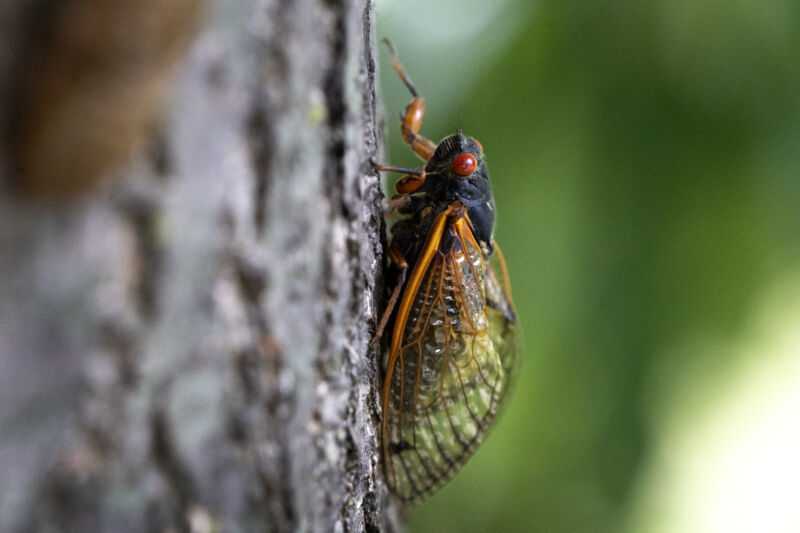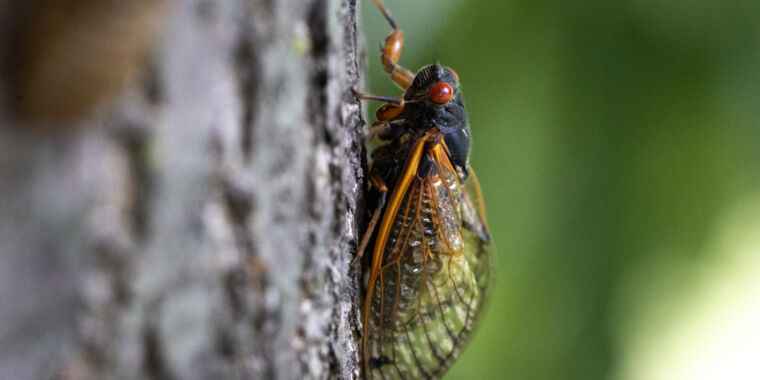
A plague of parasitic mites has hit Illinois following this year's historic crop of cicadas, leaving residents with severe skin rashes and persistent itching.
The mighty attack follows the overlapping emergence of the 17-year-old Brood XIII and 13-year-old Brood XIX last spring, a unique co-emergence that occurs only once every 221 years. The cacophonous explosion of cicadas caused an explosion of mites, which can feed on a variety of insects, including the developing eggs of periodical cicadas. But when the mites’ food source runs out, the mites bite all the humans in their midst in the hope of finding their next meal. Although the mites cannot live on humans, their bites result in scratching. The mite, Pyemotes herfsiis rightly called the “itch mite”.
“You can't see them, you can't feel them, they're always there,” Jennifer Rydzewski, an ecologist for the Forest Preserve District of DuPage County, told Chicago outlet The Daily Herald. “But thanks to the cicadas, they have a food source [and] Their population has grown explosively.”
The mites are about 0.2 millimeters long and very difficult to see with the naked eye, according to agricultural experts at Pennsylvania State University. They have four pairs of legs and are brown with a reddish tinge. Female itch mites can produce up to 250 offspring, which emerge from her abdomen as adults. The emerging adults quickly mate, after which the males die and the newly fertilized females disperse to find their own food source.
Itchy outbreak
In addition to “itch mites”, these parasites are also called “oak leaf itch mite” or “oak leaf gall mite” because they are often found feeding on the larvae of oak gall midges. These midges are a type of fly that lays eggs on oak trees. The resulting larvae feed on the tree, which encourages the formation of unusual growths (galls) around the larvae.
The first known outbreak of itch mites in the United States occurred in Kansas in August 2004. The Kansas Department of Health and Environment had called in the Centers for Disease Control and Prevention to help investigate a mysterious outbreak of a skin rash in Crawford County. Initially, 300 residents of the small town of Pittsburg reported extremely itchy rashes, primarily on the limbs, neck and face. The rashes resembled those caused by insect bites, but few of the affected people could remember being bitten by anything.
With the help of entomologists, outbreak investigators pinned the rash on itch mites. The area had experienced a mild winter and cooler summer temperatures, leading to an explosion of oak midge infestations and subsequent oak gall infestations. A detailed study found that county residents were nearly four times more likely to develop an itch rash if they had an oak tree on their property. Once itch mites invade a gall-infested oak tree, more than 16,000 mites can emerge from the gall onto a single leaf. The mites can then fall from trees and are even small enough to be carried by the wind, giving them ample opportunity to land on humans.
By the end of the outbreak, researchers estimated that 54 percent of Crawford County's approximately 38,000 residents (that's about 20,500 people) had been bitten by the mites.
Abundant parasites
But oak leaf midges are far from the only insect that itch mites feed on. In 2007, the emergence of a particularly prolific brood of cicadas led to an outbreak of itch mites in the Chicago area. The Illinois Department of Public Health noted that the “proposed common name 'oak leaf itch mite' for P. herfsi is misleading and contributed to the delay in identifying the causative agent in the 2007 outbreak in Illinois.” The department noted that at least five insect orders and nine insect families have fallen victim to the mites.
In the US, cases of itch mite rash have been documented in at least Illinois, Nebraska, Ohio, Oklahoma, Pennsylvania, Missouri, Tennessee, and Texas.
When people are bitten, they develop an itchy red rash, usually with pimple-like bumps, that can last up to two weeks. The rash develops between 10 and 16 hours after exposure, which can make it difficult to identify the source. However, the mites usually do not produce clusters of bite marks like bedbugs or burrow like scabies.
To prevent a rash, experts recommend wearing protective clothing when outdoors, including gloves when gardening or yard work, and washing your clothes and showering after any potential exposure. The insect repellent DEET is often recommended, but anecdotal reports indicate that DEET may not be completely effective. If you already have a rash, you can treat the symptoms with things like ice packs, soothing lotions (such as calamine), oral antihistamines, over-the-counter hydrocortisone creams, and, if necessary, prescription topical steroids. The good news is that the mites don’t live on you and aren’t known to spread disease.

